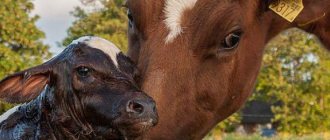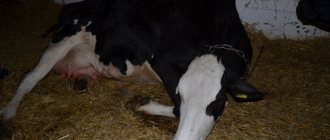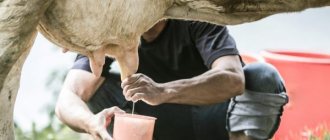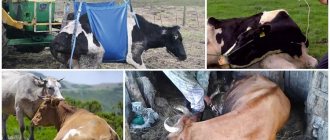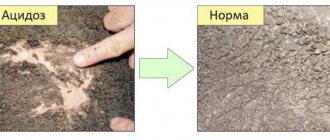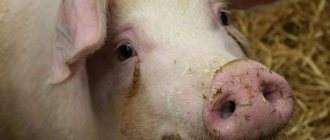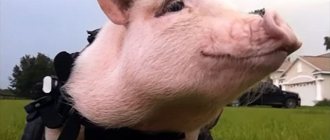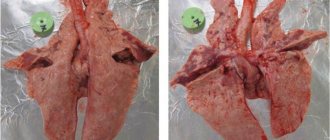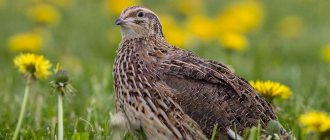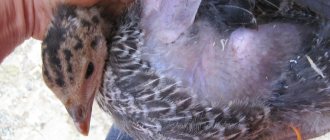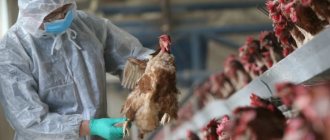Uterine prolapse in a cow
Uterine prolapse in cows is a pathology that occurs quite often after calving, especially on large farms. This is a very serious illness that can lead to barrenness and even death of the cow. The causes of complications and methods of treating the animal will be discussed in this article. Preventive measures will help prevent such pathology.
Causes of complications
Weakness and flabbiness of the muscle fibers of the birth organ are almost always the main cause of its loss. After calving, this pathology occurs more often because the cervical canal opens, which makes it easier for the reproductive organ to penetrate outward. Let's consider the possible causes of complications:
- Diseases during pregnancy.
- Improper care of a pregnant cow.
- Lack of regular walking of the animal.
- Multiple pregnancy.
- Unqualified assistance during calving – hasty or rough removal of the calf.
- Rapid birth.
- Hydrops of the membranes.
- Tethering a pregnant cow in a room with an adobe floor.
- Excessive slope of the floor (the animal's croup is lowered).
Reference. If the animal moved little during pregnancy and rarely walked, then the smooth muscles of the uterus weaken, as a result of which such a complication most often occurs during childbirth.
When the fetus is hastily removed, negative pressure is created in the intrauterine space, a piston effect occurs, as a result of which the reproductive organ is everted and pushed out along with the fetus.
Diseases that lead to pathology
If the diet is improper, dry individuals may develop tympania. The disease occurs if the cow is overfed with succulent feed. She loses her belching reflex and chewing gum. Food stagnates in the rumen. It accumulates a large amount of feed and gases. Under their pressure, premature birth or calving with complications can occur.
More on the topic: Features of caring for the Kholmogory breed of cows
The animals are first given straw and hay. This is roughage. Then they feed grass, haylage and grain mixtures. 3 days before the expected calving, succulent food is excluded from the diet of the individual. The cow is given only hay and water.
Hypocalcemia is another disease associated with improper feeding of dry animals. The level of calcium in the body decreases sharply. Calving complicates the situation. A cow may experience uterine prolapse and muscles atrophy. The animal is lying down and cannot get to its feet. The muscles don't hold up the head. Heart function deteriorates.
Complications after calving occur when diseases develop in the prenatal period. These include polyhydramnios: hydrops of the membranes. A large amount of fluid is detected in the cavities of the placenta, more than 100 liters. The cause of the disease is pathology of the cow's kidneys, improper functioning of the heart and poor circulation. Sometimes the umbilical cord is pinched. This happens most often during multiple pregnancies. The disease is diagnosed by rectal examination of the uterus. The placenta is punctured, releasing fluid from it. The fetus is forcibly pulled out of the womb.
Igor Nikolaev
auto RU
Uterine torsion - can occur if a pregnant cow falls or moves suddenly to the side. The uterus twists around its axis. The ligaments of the organ are weakened. During calving, prolapse of the vaginal walls or the entire uterus may occur. The doctor is trying to straighten the genitals, straighten them out. Rapid calving can be fatal for an individual.
Signs
It is easy to detect the fact of uterine prolapse - the organ has an impressive size. It is like a pear-shaped bag with venous nodes. The uterus hangs down from the vagina all the way to the hock joint (with complete prolapse). At first it is painted scarlet, but if the pathology is detected after a few hours, its tissues darken, acquire a brown and sometimes bluish tint.
Signs of uterine prolapse
Since the prolapsed organ is turned outward, remnants of the placenta are found on it, which must be removed. Before proceeding with organ reposition, it is necessary to diagnose its condition.
Elimination of pathology
Treatment of the disease can only be carried out by a specialist. It is aimed at disinfecting the cow’s genital organs, straightening the vaginal wall, and carrying out preventive measures against infectious diseases. Professionalism is required to eliminate the pathology correctly, without harm to the cow and fetus.
If the pathology began to develop 2-3 days before calving, then no radical measures are taken. They are limited to monitoring the condition of the vulva, protruding vaginal wall and rectum. Feces can accumulate in it and be difficult to pass away. In this case, they are removed mechanically.
- The stall is cleaned and washed. The floor is disinfected.
- The floor is tilted slightly to reduce intrauterine tension and pressure on the cow's cervix. This will prevent the development of complications, complete release of the wall with other genital organs.
- The vulva and mucous membrane of the vaginal wall are constantly washed with a disinfectant solution.
- To make it easier to monitor the animal’s hygiene, the tail is tied to one of the sides of the animal.
- The cow is fed easily digestible feed.
Read also: What to do if your rabbit becomes fat
If there are more than 3 days before calving, then the vagina is reduced. The vulva and mucous membranes are disinfected. Use a fist to press the vaginal wall into the pelvic area. To prevent recurrence of prolapse, several stitches are placed on the vulva. They will fix the wall in its normal position.
Complete vaginal prolapse is dangerous. When the mucous membrane dries out and blood access to the animal’s genitals is limited, necrosis of the tissue of the cervix and the uterus itself occurs. This cannot be allowed to happen, so treatment is carried out immediately. The wall with other genital organs is inserted into the abdominal cavity. If necessary, the ligaments that fix the uterus are sutured. The vulva is closed with sutures.
During the activities carried out and sutures applied, it is necessary to constantly monitor the health of the cow. She may calve prematurely. It is necessary to remove the sutures from the vulva in time. Otherwise, ruptures, retained placenta and difficult calving cannot be avoided.
Treatment for complete vaginal prolapse in a cow is carried out using anesthesia. The animal is immobilized. It will not harm the fetus. It is already fully formed.
Diagnostics
You can conduct the initial inspection yourself. At the same time, pay attention to the shade of the fabrics. The dark color indicates that the organ fell out several hours ago. It is necessary to act immediately - if possible, call a veterinarian. Then you need to thoroughly treat the tissue with a solution of potassium permanganate at a concentration of 1%.
After this procedure, it will become easier to remove the remnants of the placenta. Remove them with careful movements, being careful not to damage the walls of the uterus. With prolapse of the reproductive organ, there is a high risk of developing necrosis and sepsis, so the uterus should be examined for necrotic foci. When they are detected, dead tissue is treated with iodine. In some cases, when necrosis has spread greatly, it is recommended to remove the organ surgically.
Attention! Sometimes the cow's bladder falls out along with the reproductive organ after calving.
Treatment
A veterinarian should treat a cow with such a pathology. What it does:
- Examines the organ for damage and necrotic foci.
- Disinfects the uterus with a disinfectant solution.
- He sets it.
- Prescribes antibiotics and antispasmodics.
Further treatment of the animal is aimed at increasing uterine tone and preventing the development of inflammation. For this purpose, hormonal drugs and antibiotics are used.
Treatment is aimed at increasing uterine tone
How to adjust the uterus yourself?
What to do if a cow’s uterus prolapsed during calving, and there is no way to call a veterinarian? You will have to leave all worries and start acting strictly according to the instructions.
- Wear long gloves and a rubber apron.
- Wash the fabrics with a warm solution of potassium permanganate (1%).
- Delete the last one.
- Examine the uterus for damage.
- Treat small cracks with iodine.
- Wash the uterus with glucose solution to relieve swelling.
- Inject the animal intramuscularly with 10 ml of corticosteroids, for example, the drug Dexafort. This will eliminate inflammation.
- Proceed to realign the organ inwards.
Rules and procedure for performing the procedure
It is best to carefully wrap loose fabrics with a bandage to reduce their size. As the organ is inserted inside, the bandages are unwound. Several assistants will be needed to carry out the procedure. Someone must hold the cow so that it does not move. Make a fist and wrap your hand in a waffle towel to prevent slipping. The brush is directed exactly to the center of the organ from below and begins to press it inward. It will take a lot of effort, so this procedure should be entrusted to a physically strong person . Upon completion of the reduction process, it is necessary to straighten the organ inside with your hand so that it takes its natural position.
Prevention
The following measures will help prevent uterine prolapse in a cow after calving:
- Proper maintenance of a pregnant cow is high-quality food, regular walking.
- Prevention of diseases during pregnancy of a cow.
- Providing qualified assistance during the birth process.
The cow should be kept in a room with a flat floor. Not in all cases a person is able to influence the birth process, for example, when the uterus falls out due to rapid labor or during multiple pregnancies. But the farmer is obliged to try as quickly as possible to help a cow that has such a complication after calving. Timely intervention will avoid even more tragic consequences – organ tissue necrosis and sepsis.
If after calving a cow’s uterus has prolapsed, there is no time to delay. She needs qualified help. It is best to invite a veterinarian who will properly treat the reproductive organ, set it in place and administer the necessary medications. But medical assistance is not always available in the near future. In this case, you will have to act independently, following the instructions. However, after providing primary care to the cow, you still need to invite a veterinarian to examine the animal and prescribe treatment.
Uterine inversion and prolapse
Uterine inversion and prolapse is a displacement of the uterus in the form of eversion of the horn wall (intussusception) or complete inversion with its prolapse outward.
Etiology. This disease is a complication of childbirth and occurs mainly in cows and goats, less often in mares and other animals. It happens during difficult labor, childbirth with a large fetus, with overdistension of the uterus (hydropsis of the membranes, multiple pregnancy), sagging muscles of the uterus. In practice, uterine prolapse is often caused by rapid fetal extraction, especially during dry labor, when negative pressure is created in the uterus, and close contact between the fetus and the uterine mucosa, when the fetus is pulled out, promotes inversion of the uterus after the fetus is removed.
Uterine inversion can occur at the time of birth, when the fetus has an umbilical cord that is too short and strong, or spontaneously, due to increased intra-abdominal pressure (colic, tympany, when feeding animals with bulky feed). There are isolated cases of spontaneous uterine prolapse immediately or after 1-2 hours and after an easy birth. In private household plots and peasant farms of citizens, when animal owners tie various weights to the afterbirth, uterine prolapse also occurs.
In rabbits, both uteruses or just one fall out. In carnivores, there is predominantly complete loss of one horn during invagination of the second.
Clinical signs. Uterine intussusception is not characterized by any strictly specific signs. Usually the animal is worried, we observe attempts, the animal behaves as if it has colic.
Rectally, a veterinary specialist is sometimes able to palpate the fold formed by the bent walls of the uterus.
With complete prolapse of the uterus, a round or pear-shaped mass protrudes from the external genitalia, which in some cases descends to the hock joint. Cows, sheep and goats have succulent, sometimes bleeding, caruncles hanging in clusters. In pigs, the prolapsed uterus looks like intestinal loops. In a mare, the surface of the prolapsed uterus is smooth or slightly velvety. In carnivores, the fallen horn has the shape of a rounded body with a depressed apex. In case of complete prolapse, a round tube bifurcating at the ends with characteristic indentations of the peripheral ends of the horns protrudes from the genital slit.
Sometimes prolapse of the uterus, rectum and bladder occurs. The bladder in animals can prolapse through a vaginal wound or be everted through the urethra.
With invagination, when it is not accompanied by an inflammatory reaction, the invaginated area can spontaneously straighten out. The areas of the serous membrane touching in the fold usually become soldered to each other due to adhesive inflammation; In the resulting cavities, exudate accumulates, which sometimes resolves. As a result of a chronic course, the animal develops chronic endometritis, which subsequently leads to infertility. In place of the welded folds, thickenings form, which disrupt the normal course of pregnancy, if the animal is fertilized. In the area of intussusception, some animals develop purulent or putrefactive inflammation, which ends in a generalized form of purulent peritonitis or general sepsis.
When the uterus prolapses in the first hours, it has a bright pink or red color. As stagnation develops, the fallen surface becomes blue and even dark gray. The mucous membrane swells and becomes gelatinous; It is easily injured, bleeds, and cracks when dry. After some time, signs of inflammation appear in the uterus, necrosis of the mucous membrane occurs, accompanied by fibrinous deposits, dirty brown scabs, the placentas disintegrate, with the separation of soft, crumbly masses. If the patient is not provided with the necessary veterinary care in a timely manner, gangrene and sepsis develop.
Treatment. If the pathological process during uterine intussusception has not started (no more than 2 days have passed), you should try to straighten the uterus by hand or by pouring large quantities of weakly disinfecting solutions into its cavity, with the croup (back of the body) raised. The animal is given general or sacral epidural anesthesia.
Vaginal and uterine prolapse
Vaginal and uterine prolapse
Vaginal prolapse is usually observed in the 2nd half of pregnancy, caused by relaxation of the female fixation apparatus in combination with an increase in intraperitoneal pressure. The disease occurs mainly under unsatisfactory living conditions and inadequate feeding of pregnant individuals.
There are partial and complete vaginal prolapse. In partial, a red, mucous-coated mass, ranging from a chicken to a goose egg, protrudes from the vulva (most noticeable in a lying individual). Complete vaginal prolapse can occur as a complication of partial prolapse, with violent contractions and pushing, etc. A large spherical mass protrudes from the vulva, covered with a bright pink, then dark blue, shiny mucous membrane. The animal has problems defecating and urinating.
Uterine prolapse is a complication after childbirth in cows due to overstretching of the uterus and flabbiness of its muscles, which occurs due to the lack of active exercise during pregnancy. A bright pink, then blue pear-shaped mass protrudes from the external genitalia, sometimes descending to the hock joint.
Causes of uterine prolapse in cows
Loss in cattle is difficult to treat. More often, heifers and older individuals suffer from this pathology. The reasons for loss can be varied. However, they all come down to improper care.
Uterine prolapse in cows before calving
It is believed that such pathology appears quite rarely before calving. Reasons: weak muscle tissue, age of the individual (too young or old cow), various infections, multiple pregnancies, too early onset of contractions.
If by this time the calf has already formed, then you can try to save it. The diseased organ of the cow is reduced, if this is still possible, or amputated.
Uterine prolapse in a cow after calving
This complication also has various causes:
- lack of active exercise;
- illiterate fetal extraction;
- lack of proper care for a pregnant cow;
- multiple births;
- rapid labor;
- retention of placenta;
- hydrops of fetal membranes;
- presence of infectious diseases.
Calving complications can occur when the cow's calcium levels are low (hypocalcemia) because calcium affects muscle tone.
Similar chapters from other books
Narrowness of the vagina
Narrowing of the vagina
Narrowing of the vagina In some cases, bitches experience a slight narrowing of the vagina, which can be caused by a stricture (tightening) of the orbicularis muscle. During mating, a strong male is able to break the stricture. This causes a lot of pain in the bitch. Either way, the bitch
Read also: All the most important things about sheep of the Kuibyshev breed
Uterine lesion
Damage to the uterus A serious problem is the disruption of the hormonal activity of the ovaries, which, in turn, leads to changes in the tissues of the uterus and various inflammations. The situation is aggravated by the entry of infections from the urinary tract into the uterine cavity. Defeat
5.4. UTERUS TORSION
7.1. UTERUS EVERION AND PROPRESSION
7.2. SUBINVOLUTION OF THE UTERUS
8.2. HYPERPLASIA AND EVERION OF THE VAGINA
Uterine cancer Unsterilized female rabbits have a high risk of acquiring uterine cancer over time. All females not used for permanent breeding should be spayed to maintain their health and longevity. Russian veterinarians have noticed that
Prolapse of the uterus and vagina
Prolapse of the uterus and vagina Prolapse of the vagina and uterus is relatively rare and is caused by irregularities and injuries. With this pathology, the animal becomes restless and often strains, which is accompanied by urination and defecation. With prolapse of the uterus and vagina
Subinvolution of the uterus
Subinvolution of the uterus Subinvolution is a slowdown in the processes of restoration of the uterus after childbirth to a state corresponding to this organ in non-pregnant individuals, which occurs due to multiple or post-term pregnancies, lack of exercise, inadequate feeding,
Subinvolution of the uterus
Subinvolution of the uterus Subinvolution is a slowdown in the process of restoration of the uterus after childbirth to a state normal for this organ in non-pregnant individuals, which occurs due to multiple or post-term pregnancy, lack of exercise, inadequate feeding, in
Vaginal and uterine prolapse
Vaginal and uterine prolapse Vaginal prolapse, as a rule, is observed in the 2nd half of pregnancy, due to relaxation of the female fixation apparatus in combination with an increase in intraperitoneal pressure. The disease occurs mainly when
Subinvolution of the uterus
Subinvolution of the uterus Subinvolution is a slowdown in the processes of restoration of the uterus after childbirth to a state normal for non-pregnant individuals, which occurs due to multiple or post-term pregnancy, lack of exercise, inadequate feeding, in particular
Uterine inversion and prolapse
Eversion and prolapse of the uterus Eversion and prolapse of the uterus occur in the first hours after farrowing. The main predisposing factor of the pathology is the lack of active exercise. Uterine prolapse is caused by strong contractions and pushing, overstretching of the uterus, rapid violent
Vaginal prolapse (Prolapsus vaginae)
Vaginal tumors
Tumors of the vagina Tumors of the reproductive system in bitches are most often observed in the vaginal area. Most of them are benign. Transmissible venereal tumor is a malignant disease that is observed regardless of gender and is sexually transmitted. IN
Pathogenesis of uterine prolapse in cows
Uterine prolapse in a cow is a displacement in which the organ is completely or partially turned outward by the mucous membrane.
The prolapse is accompanied by heavy bleeding, friability and swelling of the diseased organ. Over time, its color darkens significantly, it becomes covered with cracks and wounds. Most often, prolapse occurs immediately after calving, when the cervix is still dilated. This contributes to organ prolapse. The main cause of this pathology is flabby muscle tissue.
Sometimes the pathology is accompanied by prolapse of part of the rectum, bladder and vagina.
Treatment of uterine prolapse in a cow
Since prolapse is a common pathology, the cow should not be left alone after calving. She must remain under observation for some time. It happens that even after a very successful calving, organ prolapse occurs.
The video of a cow's uterine prolapse will help you understand what help is needed.
The prolapsed uterus looks like a kind of rounded mass. Sometimes it drops below the hock joint. The mucous membrane swells when it falls out and is easily injured, cracking when it dries. After a certain time, it becomes inflamed and signs of necrosis begin. If you do not help the animal at this moment, gangrene and sepsis usually develop.
Anesthesia must be administered before reduction. Then you need to wash the organ with a cold solution of manganese or tannin. If foci of necrotic inflammation are noticeable, then you need to use a warm solution. Dead parts of the mucous membrane are treated with iodine. To reduce the volume of the prolapsed organ, it is tied with bandages. For the same purpose, the veterinarian injects oxytocin into the cavity. Large wounds on the organ are stitched with catgut.
After such careful preparation, the reduction begins. First, you need to wrap a sterile towel around your hand. Next, with careful movements, the top of the uterine horn is pushed forward. After reduction, you need to hold the uterus in the cavity for some time, smoothing its mucous membrane with your fist.
Often, after repositioning the uterus, a cow develops endometritis, an inflammatory disease of the inner layer of the mucous membrane (endometrium). This disease is treated comprehensively, using antibiotics.
If the uterus is severely damaged and susceptible to necrosis, then in order to save the animal’s life, the organ is amputated.
Treatment of uterine prolapse in cows after birth
Nowadays, difficult calvings in cows have become more frequent, which can result in a huge number of negative consequences. One of the most dangerous pathologies is intussusception of the uterus with its subsequent exit through the vagina. The above pathology can occur both during and after childbirth, but no later than 12 hours after calving. Most often, uterine prolapse occurs in cows and goats. After amputation of the above part and at the end of the lactation period, the cow is slaughtered, since it loses the ability to reproduce offspring at all. The history of the disease states that it causes great damage to the economy; therefore, great attention should be paid to the treatment of this disease and, at the same time, we should not forget about preventive measures.
- 1 Reasons
- 2 Clinical signs
- 3 Treatment
- 4 Some useful tips
- 5 Video “Cow Calving”
Prevention of uterine prolapse in cattle
Prevention of hair loss consists of proper preparation for calving:
- before calving, at a certain time, it is necessary to stop lactation so that the cow’s body is ready for childbirth;
- it is necessary to reconsider the animal’s diet - switch to hay, and then to forage;
- reduce the amount of fluid consumed;
- Before calving, you need to prepare a separate, disinfected stall;
- The first or complicated pregnancy is a reason for a veterinarian to be present during calving.
In addition, it is important to monitor the cow’s diet before pregnancy. Daily exercise and timely vaccination of the livestock against various infections are also necessary.
Causes of the disease
- Poor or low-quality nutrition - too heavy or easily fermented feed.
- Absence or insufficient walking - in summer, a pregnant animal should be in the air for at least 4 hours, in winter - two hours.
- Stalls with uneven or sloping floors make it difficult for a cow to move around there.
- Lack of vitamins in food - vitamin deficiency can also affect the health of the calf and the course of labor.
- Obesity or exhaustion - any disruption of normal body functions has a detrimental effect on the animal’s well-being.
- Pregnancy with multiple calves makes calving more difficult.
- Difficult labor - prolonged or complicated for other reasons.
Causes and treatment of uterine torsion in cows
Torsion of the uterus is a rotation around the axis of the entire organ, horn or section of the horn.
Torsion may occur due to the anatomical features of the fixing section of the uterus. In cows during pregnancy, it moves down and slightly forward. The bundles of horns are directed upward and somewhat backward. This position can lead to the fact that the part of the uterus that is not fixed laterally moves to one side. At the same time, her body, neck, and part of the vagina are twisted.
Twisting is not accompanied by specific symptoms. In most cases, they are similar to pathology of the gastrointestinal tract. The cow is restless and has no appetite. During a rectal examination, the folds of the uterus can be clearly felt. In this case, one of them is tightly stretched, the other is free. When diagnosing, it is important to determine in which direction the twisting occurred. Subsequent care for the animal will depend on this.
The main reasons for such twisting are sudden movements of the cow, exercise on steep slopes, and long movement of the herd. With this pathology, the cow loses appetite, becomes restless, and breathes heavily. The fetus does not come out during calving, despite attempts.
At calving, when the twisting side is precisely set, twisting is done in the opposite direction. At the same time, an oil solution is poured into the cavity.
You can untwist the uterus by throwing the cow on its back and sharply turning the animal around its axis in the direction in which the twisting occurred. Thus, the uterus remains in place, and the body, unwinding, allows it to take the correct position.
Sometimes such procedures have to be repeated until the pathology is eliminated.
Types of uterine pathologies:
- Uterine volvulus in cows. It can be eliminated by carefully turning the animal around its axis. You can also return the organ to its original position by inserting your hand into the neck.
- Bend of the uterus in a cow. Pathology is observed when the organ is displaced under the pelvic bones. When providing assistance, you should lay the cow on its side, then turn it over onto its back. As a rule, after this the fetus takes the correct position.
The uterus can be corrected without compromising the health of the animal with minor pathology. If the twisting is complete, the calf dies and the cow's health deteriorates significantly.
Uterine prolapse in a cow before and after calving: treatment, what to do
Uterine prolapse in a cow is a rather serious complication, which mainly appears after calving. It is not recommended to perform the adjustment on your own; it is better to use the help of an experienced specialist.
Causes of uterine prolapse in cows
Loss in cattle is difficult to treat. More often, heifers and older individuals suffer from this pathology. The reasons for loss can be varied. However, they all come down to improper care.
Uterine prolapse in cows before calving
It is believed that such pathology appears quite rarely before calving. Reasons: weak muscle tissue, age of the individual (too young or old cow), various infections, multiple pregnancies, too early onset of contractions.
If by this time the calf has already formed, then you can try to save it. The diseased organ of the cow is reduced, if this is still possible, or amputated.
Uterine prolapse in a cow after calving
This complication also has various causes:
- lack of active exercise;
- illiterate fetal extraction;
- lack of proper care for a pregnant cow;
- multiple births;
- rapid labor;
- retention of placenta;
- hydrops of fetal membranes;
- presence of infectious diseases.
Calving complications can occur when the cow's calcium levels are low (hypocalcemia) because calcium affects muscle tone.
Pathogenesis of uterine prolapse in cows
Uterine prolapse in a cow is a displacement in which the organ is completely or partially turned outward by the mucous membrane.
The prolapse is accompanied by heavy bleeding, friability and swelling of the diseased organ. Over time, its color darkens significantly, it becomes covered with cracks and wounds. Most often, prolapse occurs immediately after calving, when the cervix is still dilated. This contributes to organ prolapse. The main cause of this pathology is flabby muscle tissue.
Sometimes the pathology is accompanied by prolapse of part of the rectum, bladder and vagina.
What to do if a cow has a prolapsed uterus
If a cow's uterus has popped out, the best thing the owner can do for the animal is to call a specialist.
While the veterinarian is on the road, the owner can carry out some preparatory activities. First of all, it is necessary to position the animal in such a way that its back (that is, the croup) is slightly higher than the head.
Then you can clear the space around the cow of unnecessary objects and rinse the room of dirt and dust. You also need to rinse the organ yourself from the placenta, having previously prepared a bucket of water with a manganese solution for this. You need to wash it carefully, avoiding unnecessary injury.
Before the doctor arrives, it is advisable to prepare everything you may need: antiseptics, disposable droppers, syringes, as well as clean, sterile tissues.
Treatment of uterine prolapse in a cow
Since prolapse is a common pathology, the cow should not be left alone after calving. She must remain under observation for some time. It happens that even after a very successful calving, organ prolapse occurs.
The video of a cow's uterine prolapse will help you understand what help is needed.
The prolapsed uterus looks like a kind of rounded mass. Sometimes it drops below the hock joint. The mucous membrane swells when it falls out and is easily injured, cracking when it dries. After a certain time, it becomes inflamed and signs of necrosis begin. If you do not help the animal at this moment, gangrene and sepsis usually develop.
Anesthesia must be administered before reduction. Then you need to wash the organ with a cold solution of manganese or tannin. If foci of necrotic inflammation are noticeable, then you need to use a warm solution. Dead parts of the mucous membrane are treated with iodine. To reduce the volume of the prolapsed organ, it is tied with bandages. For the same purpose, the veterinarian injects oxytocin into the cavity. Large wounds on the organ are stitched with catgut.
After such careful preparation, the reduction begins. First, you need to wrap a sterile towel around your hand. Next, with careful movements, the top of the uterine horn is pushed forward. After reduction, you need to hold the uterus in the cavity for some time, smoothing its mucous membrane with your fist.
Often, after repositioning the uterus, a cow develops endometritis, an inflammatory disease of the inner layer of the mucous membrane (endometrium). This disease is treated comprehensively, using antibiotics.
If the uterus is severely damaged and susceptible to necrosis, then in order to save the animal’s life, the organ is amputated.
Prevention of uterine prolapse in cattle
Prevention of hair loss consists of proper preparation for calving:
- before calving, at a certain time, it is necessary to stop lactation so that the cow’s body is ready for childbirth;
- it is necessary to reconsider the animal’s diet - switch to hay, and then to forage;
- reduce the amount of fluid consumed;
- Before calving, you need to prepare a separate, disinfected stall;
- The first or complicated pregnancy is a reason for a veterinarian to be present during calving.
In addition, it is important to monitor the cow’s diet before pregnancy. Daily exercise and timely vaccination of the livestock against various infections are also necessary.
Causes and treatment of uterine torsion in cows
Torsion of the uterus is a rotation around the axis of the entire organ, horn or section of the horn.
Torsion may occur due to the anatomical features of the fixing section of the uterus. In cows during pregnancy, it moves down and slightly forward. The bundles of horns are directed upward and somewhat backward. This position can lead to the fact that the part of the uterus that is not fixed laterally moves to one side. At the same time, her body, neck, and part of the vagina are twisted.
Twisting is not accompanied by specific symptoms. In most cases, they are similar to pathology of the gastrointestinal tract. The cow is restless and has no appetite. During a rectal examination, the folds of the uterus can be clearly felt. In this case, one of them is tightly stretched, the other is free. When diagnosing, it is important to determine in which direction the twisting occurred. Subsequent care for the animal will depend on this.
The main reasons for such twisting are sudden movements of the cow, exercise on steep slopes, and long movement of the herd. With this pathology, the cow loses appetite, becomes restless, and breathes heavily. The fetus does not come out during calving, despite attempts.
At calving, when the twisting side is precisely set, twisting is done in the opposite direction. At the same time, an oil solution is poured into the cavity.
You can untwist the uterus by throwing the cow on its back and sharply turning the animal around its axis in the direction in which the twisting occurred. Thus, the uterus remains in place, and the body, unwinding, allows it to take the correct position.
Sometimes such procedures have to be repeated until the pathology is eliminated.
Types of uterine pathologies:
- Uterine volvulus in cows. It can be eliminated by carefully turning the animal around its axis. You can also return the organ to its original position by inserting your hand into the neck.
- Bend of the uterus in a cow. Pathology is observed when the organ is displaced under the pelvic bones. When providing assistance, you should lay the cow on its side, then turn it over onto its back. As a rule, after this the fetus takes the correct position.
The uterus can be corrected without compromising the health of the animal with minor pathology. If the twisting is complete, the calf dies and the cow's health deteriorates significantly.
